Contemporary Poverty and the Tasks of the Left
…Our imperial endeavors alone, if Chalmers Johnson is right, “will, sooner or later, condemn the United States to a devastating trio of consequences: imperial overstretch, perpetual war, and insolvency.”[1]And even if that fear is overblown – and it probably is not – there is certainly trouble looming at home, trouble for which we all need to be prepared, and trouble that we would do well to avert by systematic and extensive social reform before it occurs.[2] For if the challenges abroad are linked to empire, at home they are linked to poverty.
Per capita income in the U.S. remains high. We are still a rich society. We are currently one of the ten or twelve richest in comparative terms, though the United States is no longer in per capita terms the richest – that title has recently moved to Europe (to Luxembourg, Liechtenstein, Monaco or Norway, depending on who is doing the counting). But the title we do hold is the inequality one. The United States remains unique among developed societies in combining its huge riches with significant pockets of the desperately poor. The U.S. currently “has both the highest level of inequality and the highest level of poverty (including child poverty) of its peers. In other words, much less of the vast income of the United States is reaching the lower end of the income distribution”[3] than is normal in other advanced industrial economies, including even in the UK. Poverty levels in the United States in 2009 returned to those last seen in 1994. 14.3 percent of all Americans – one American in seven – lived that year on incomes below the official poverty level.[4] That was 3.7 million more Americans in poverty than had been there twelve months before; in poverty that was by then the condition of one American child in every five. The distribution of poverty in the United States remains ethnically uneven. One white American in 10 knew poverty in 2009, one African-American in four, a quarter of Hispanic America, and one Asian-American in eight. It was the American poor, and the near-poor – some 51 million in total – who also went through part or all of 2009 without any form of health care coverage. Health care coverage may now be poised to change – if the Affordable Care Act survives its challenge in the courts and the Congress – but the poverty which made those health care changes necessary is not going away anytime soon. Nor are we likely easily to lose the urban ghettos in which so much of that poverty is currently so heavily concentrated.
If that were not enough to give us cause for alarm, we must remember that the American middle class is not currently in great shape either. The years between 2000 and 2009 were a “lost decade for family income” in the United States, the “worst for American families in at least half a century” as “the inflation adjusted income of the median household…fell 4.8%”[5] in just nine years. In December 2009 one in five Americans was either “unemployed, underemployed or just plain out of work. One in nine families [couldn’t] make the minimum payment on their credit cards. One in eight mortgages [was] in default or foreclosure. One in eight Americans [was] on food stamps. More than 120,000 families [were] filing for bankruptcy each month [and] the economic crisis [had] wiped more than $5 trillion from pensions and savings.” Little wonder then that Elizabeth Warren could contemplate an “America without a middle class”,[6] a society polarized between the super rich and the poor; or that Arianna Huffington should chose to describe the contemporary United States as Third World America. “I deliberately chose a title that is very jarring,” she said, “because I really believe that we are on this trajectory, where the middle class is crumbling.”[7] She has a point, for as she spoke, “one out of every six Americans [were] in government anti-poverty programs. More than 50 million [were] on Medicaid. Forty million receive[d] food stamps, and ten million receive[d] unemployment benefit.”[8] That is hardly a stellar economic performance.
Then there is, as there always is in the United States, the hidden hand of racism. The level of black unemployment is double that of white. One young African-American male in nine is currently in jail.[9] African-Americans are concentrated in urban areas from which white flight has sucked tax revenues, jobs and decent public infrastructure; and if you are black and male, you have a four times better chance of being executed by the state for crimes that, if you were white, would leave your life intact. Black or white, Latino or Asian, Americans now work in an economy whose long hours, low pay and an inadequate health care system leave them disproportionately vulnerable to bankruptcy if sick, poverty if unemployed, and stressed if at work.[10] The American dream is in reality an illusion for more and more Americans, replaced for so many by what Jeremy Rifkin called “the American daydream…substitutes – legal gambling, celebrity television and the like – grounded in fantasy and delusion.” [11] There are now two very different Americas – one in the suburbs and one in the cities. Those two Americas met briefly in riots in the hot summers of the late 1960s. With inequality now more severe than in the 1960s, how long will it be before they meet in similar conditions again?
Fortunately, we don’t need to wait for urban rioting to realize that America is rapidly coming to the end of a particular road.[12] Twice now in the post-war period, the United States has seen sustained prosperity. Between 1948 and1973 it was a prosperity based on a strong manufacturing performance and on high levels of domestic consumer demand rooted in rising industrial wages. Between 1991 and 2008, by contrast, enhanced consumption was based on stagnant wages and rising income inequality, an extension of the hours worked by the typical family, a stock market bubble for the wealthy and, for the rest of us, the maxing out of our credit cards. In the first of those periods of growth, people spent the wages they had already earned. In the second they spent income they hoped they would earn in the future. For thirty years conservatives have been preaching at us the virtues of unregulated markets, the dangers of trade unionism, and the self-fulfilling nature of anti-poverty programs. But by surrendering the war on poverty, they allowed poverty to flourish and debt to grow. The unregulated markets for which they campaigned culminated not in sustained growth but in a global recession which brought involuntary unemployment to at least 50 million people world-wide. Senior bankers are already back to paying themselves bonuses, as though they bore no responsibility for the parlous economy in which the rest of us struggle to survive, and as though the crisis which they generated has now passed. But it has not passed; and they (and their conservative acolytes) have to be particularly foolish, or particularly selfish, to tell us again that we should solve the problems of the second growth period in which they alone flourished by replicating them in a third.
The task before us now is not to build another brief period of credit-based consumption. Sand is not a strong foundation on which to build a house. Our task now is to find a way back to the conditions of prosperity characteristic of the first period of post-war economic growth. Simply going back to the 1950s settlement is neither possible nor desirable. We face a new international division of labor, and we also face a domestic society which is no longer as tolerant as was that in the 1950s of racism and patriarchy. Our task rather is to find a way forward that, amid these new global and domestic conditions, can reproduce the manufacturing strength and rising wages of the “golden age” of American capitalism. We will not do that successfully without a root-and-branch transformation of the imperial and financial America which has brought us to our contemporary impasse. The time for tinkering is over. The time for fundamental reform is well and truly upon us. The capacity and direction of reform in the United States is, unavoidably, the overarching question of the age.
This is extracted from Chapter 5 of the follow-up volume to ANSWERING BACK. Provisionally titled MAKING THE PROGRESSIVE CASE, it will be published in 2011. The material in Chapter 5 seems immediately relevant, hence its reproduction here.
[1] Chalmers Johnson, Three Good Reasons to Liquidate Our Empire and 10 Ways to Do It, posted on Alternet.org July 31 2009: available at http://www.alternet.org/story/141689
[2] I am not alone in thinking this. See, for example, the Amped Status Report, The Critical Unraveling of American Society, at http://ampedstatus.com/the-critical-unraveling-of-us-society
[3] State of Working America, op.cit., p. 357
[4] That was 44 million Americans in total. If you factor in food stamps and other anti-poverty programs, 8 million of those poor Americans just escape the poverty line; but remember, it is a national poverty line. It doesn’t allow for the higher cost of housing in urban American, or other regional variations in costs of living. It is also a very low poverty threshold, nowhere near the 60% of median income used as the measure of poverty in Western Europe. For the argument that the figures under-state the true level of poverty, see David McGraw, “That ‘Official’ Poverty Rate? It’s Much worse than You Think,’ posted on alternet.org September 23, 2010: available at http://www.alternet.org/story/148255
[5] The Wall Street Journal, September 17, 2010
[6] http://www.alternet.org/story/144388, posted December 5 2009
[7] In conversation with Amy Goodman, posted on Alternet.org, September 15, 2010: available at http://www.alternet.org/story/148192
[8] Amy Goodman, opening the same interview
[9] See One in a 100: Behind Bars in America 2008 published by the Pew Center on the States and available at http://www.pewcenteronthestates.org/…/8015pcts_Prison08_final_2-1-1_Forweb.pdf
[10] For details, see Peter N. Stearns, From Alienation to Addiction: Modern American Work in Global Historical Perspective, Boulder: Paradigm Publishers, 2008, pp. 139-60; and Francis Green, Demanding Work: The Paradox of Job Quality in the Affluent Economy, Princeton: Princeton University Press, 2006
[11] Jeremy Rifkin, The European Dream, New York, Penguin, 2004, p. 30. See also Peter McClelland and Peter Tobin, American Dream Dying: The Changing Economic Lot of the Least Advantaged, Lanham, MD: Rowman and Littlefield, 2009
[12] For a similar view, see William Grieber, Come Home America, New York: Rodale, 2009
David Coates holds the Worrell Chair in Anglo-American Studies at Wake Forest University. He is the author of Answering Back: Liberal Responses to Conservative Arguments, New York: Continuum Books, 2010.
He writes here in a personal capacity.
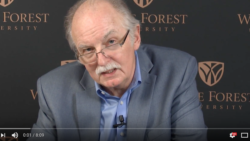
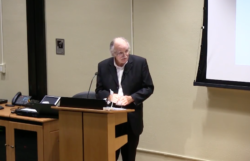
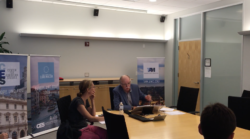
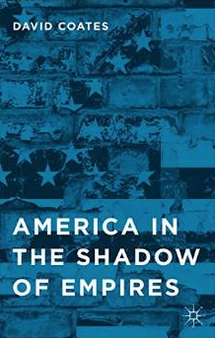
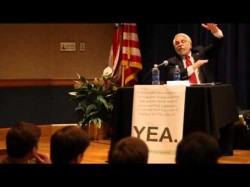

goatherd says:
Thanks for another interesting article and lots of footnotes to investigate.
It is hard to escape the thought these days that we have are witnessing the death spiral of our country. We are at a time that would tax the best of our resources, ideas and collective intelligence. Yet the “real” America, the America that was great, seems eclipsed by misinformation, cults of celebrity and intellectual laziness. The political atmosphere is poisonous and our system is dysfunctional at best. We have a good part of the population that seems angry to the point of insanity and media that inflame people’s minds with manufactured controversy. Our politics has degenerated into corporate sponsored propaganda and our society into spectacle. In short, things don’t look so good. It seems that a “skin of our teeth” moment might be the best we can hope for, while something out of Jered Diamond’s “Collapse” is not out of the question.
I think what lies beneath this chaos is that the “classless society” envisioned in the days of my youth has become an America strictly divided into classes, increasingly disparate and increasingly dissociated. The more fortunate among us not only embrace this new caste system, they want to promote and institutionalize it. They are completely at home with there being “little people” as long as we stay out of their gated communities and have to decency not to spoil their experience when they venture forth for shopping expeditions.
Europe is looking awfully good to me these days. I could even sell raw milk cheese there.
David Coates says:
I share much of your fears and analysis. These are difficult times.T he extract from the forthcoming volume is actually the end section of a chapter entitled Making the Case for a Reform of the American Model. We are at/approaching some kind of watershed moment, at the beginning of a period when America has to redesign itself to cope with a world it cannot, will not and should not dominate. There is much we should learn from Europe, but unless the Democratic left begin making the case, the extreme right will make it in very different terms and compound the very problems they claim to be addressing. The task is enormous and the politics of achieving it are appalling difficult, which is why there are so many American goat farmers already in the UK! I mean it – one immediately comes to mind, a fellow peace campaigner who reared goats on the North Yorkshire Moors, ironically in the direct shadow of the Fylindales Early warning station (part of the Cold War apparatus of NATO). Having made the personal journey in the other direction, I hope we all stay and campaign for a better America. There are so many of us who feel this way: it is the movement, the program and the leadership that stills need creating – very late in the day!
Fiddling While Rome Burns | David Coates says:
[…] CommentsDavid Coates on Contemporary Poverty and the Tasks of the Leftgoatherd on Contemporary Poverty and the Tasks of the Leftgoatherd on The Hijacking of the […]
Terry Pratt says:
There is no shortage of blame to go around, but prosperity is not coming back anytime soon: Climate change and peak oil (and political responses to these) virtually assure as much.
Also it is worth noting that government-defined standards of poverty are woefully inadequate to measure the breadth or depth of the problem. Government defines many people as poor when they are not, and also defines many – probably a greater number – people wrongly as not-poor.
For example, compare a (not-poor) childless adult with zero or negative net worth working full time at minimum wage and paying half his income for rent with a (poor) childless retired homeowner with no mortgage and a net worth (including home equity) of $1 million.
Who’s really poor and who’s really not poor? Government statistics are not meaningful and cannot be trusted.
US 2012 – Finding Private Ryan: Pushing Back the Republican Tide — Social Europe Journal says:
[…] at us with an even thinner welfare net than that on offer before. As we have argued on my website many times, the United States has now enjoyed two post-war periods of sustained economic growth, both of which […]